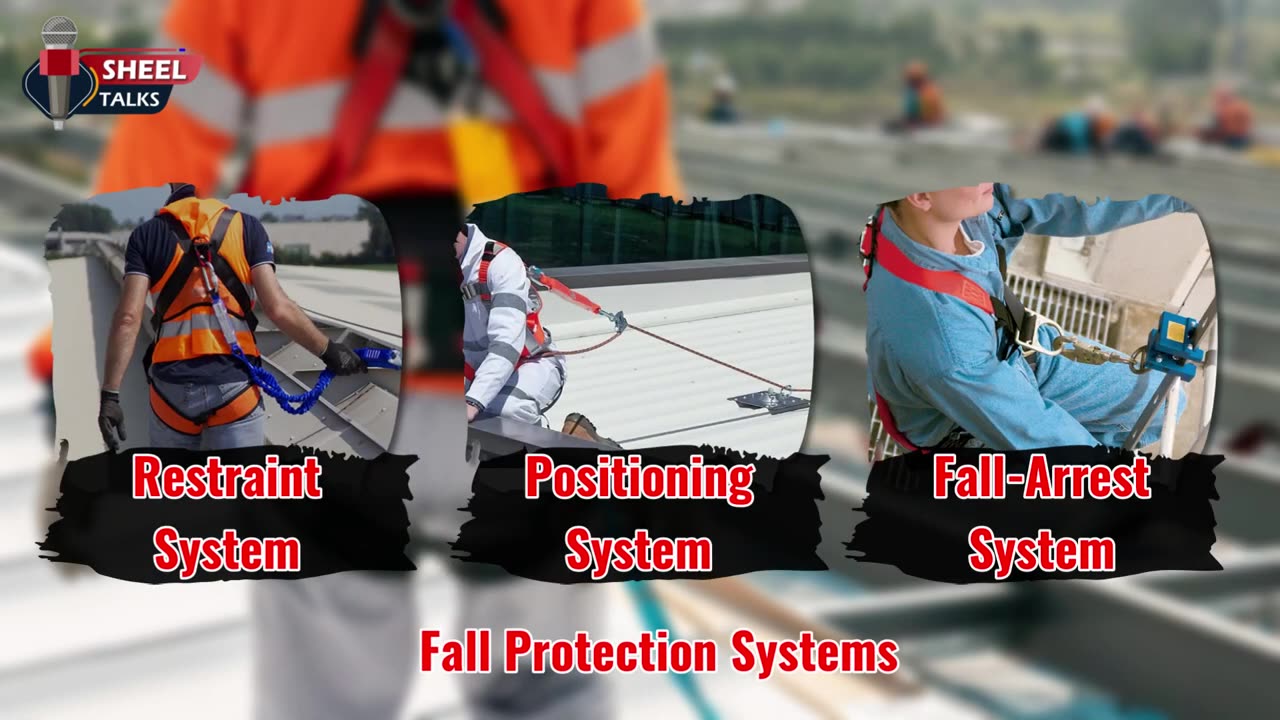Premium Only Content

Working at Height ToolBox Talk Safety Video in English -- Ladder Safety #safetyfirst #ppe
**Toolbox Talk: Working at Height – Ladder Safety**
**#SafetyFirst**
---
### **Purpose**
This toolbox talk highlights the safe use of ladders for working at height, aiming to prevent accidents, injuries, and fatalities.
---
### **Key Discussion Points**
#### **1. Pre-Use Inspection**
Always inspect ladders before use to ensure they are safe and fit for purpose. Check for:
- Cracks, bends, or damage to the rungs and side rails.
- Missing or loose parts.
- Stability of ladder feet and non-slip features.
- Cleanliness (no grease, oil, or dirt that could cause slips).
**If a ladder is damaged, tag it as “Do Not Use” and report it immediately.**
---
#### **2. Ladder Selection**
Use the right ladder for the job:
- **Step Ladders**: For stable, freestanding use.
- **Extension Ladders**: For reaching higher areas; ensure proper support.
- Ensure the ladder length allows you to work without overreaching.
**Never use makeshift ladders (e.g., planks, chairs).**
---
#### **3. Safe Ladder Setup**
- Place ladders on a firm, level surface.
- Use the **4:1 Rule** for extension ladders: For every 4 feet of height, position the base 1 foot away from the wall.
- Secure the ladder at the top or bottom to prevent movement.
- Ensure at least 3 feet of ladder extends above the landing point.
**Avoid setting up ladders near doors, busy areas, or in adverse weather conditions without proper precautions.**
---
#### **4. Climbing and Working Safely**
- Maintain **3 points of contact** (two hands and one foot or two feet and one hand).
- Always face the ladder while climbing or descending.
- Avoid carrying tools or materials in your hands; use a tool belt or pulley system.
- Keep your body centered on the ladder ("belt buckle rule") to prevent tipping.
**Do not stand on the top rung or the bucket shelf of step ladders.**
---
#### **5. Weight Limits**
- Check the ladder's load rating (combined weight of user, tools, and materials).
- Never exceed the manufacturer's weight capacity.
---
#### **6. Common Hazards**
- **Overreaching**: Move the ladder instead of leaning sideways.
- **Unstable Surfaces**: Avoid placing ladders on uneven ground, slippery areas, or unstable objects.
- **Weather**: Postpone ladder work in high winds, heavy rain, or icy conditions.
---
#### **7. Emergency Procedures**
- Know the location of first-aid kits and emergency contacts.
- If someone falls, do not move them unless they are in immediate danger; call for emergency help.
---
### **Do’s and Don’ts**
| **Do** | **Don’t** |
|------------------------------------|-----------------------------------|
| Inspect the ladder before use. | Use a damaged or defective ladder.|
| Wear non-slip footwear. | Place ladders near power lines. |
| Use ladders for their intended purpose.| Overreach or lean off balance. |
| Secure ladders at the top/bottom. | Allow multiple people on a ladder.|
---
### **Closing Notes**
Ladders are useful tools but can become dangerous if misused. Always follow safety protocols and report unsafe conditions immediately.
**Remember: Safety is everyone's responsibility!**
**#SafetyFirst #WorkSmart #WorkSafe**
Would you like additional materials, such as a checklist or visual aids, to support your toolbox talk?
-
 1:25:53
1:25:53
Kim Iversen
3 days agoStriking Back: Taking on the ADL’s Anti-Free Speech Agenda
67.8K32 -
 49:35
49:35
Donald Trump Jr.
11 hours agoA New Golden Age: Countdown to Inauguration Day | TRIGGERED Ep.202
148K170 -
 1:14:34
1:14:34
Michael Franzese
10 hours agoWhat's Behind Biden's Shocking Death Row Pardons?
65.3K46 -
 9:49
9:49
Tundra Tactical
9 hours ago $13.14 earnedThe Best Tundra Clips from 2024 Part 1.
76.9K7 -
 1:05:19
1:05:19
Sarah Westall
9 hours agoDying to Be Thin: Ozempic & Obesity, Shedding Massive Weight Safely Using GLP-1 Receptors, Dr. Kazer
70.5K19 -
 54:38
54:38
LFA TV
1 day agoThe Resistance Is Gone | Trumpet Daily 12.26.24 7PM EST
51.7K9 -
 58:14
58:14
theDaily302
18 hours agoThe Daily 302- Tim Ballard
52.8K7 -
 13:22
13:22
Stephen Gardner
11 hours ago🔥You'll NEVER Believe what Trump wants NOW!!
102K245 -
 54:56
54:56
Digital Social Hour
1 day ago $10.51 earnedDOGE, Deep State, Drones & Charlie Kirk | Donald Trump Jr.
56.4K5 -
 DVR
DVR
The Trish Regan Show
13 hours agoTrump‘s FCC Targets Disney CEO Bob Iger Over ABC News Alleged Misconduct
61.7K37